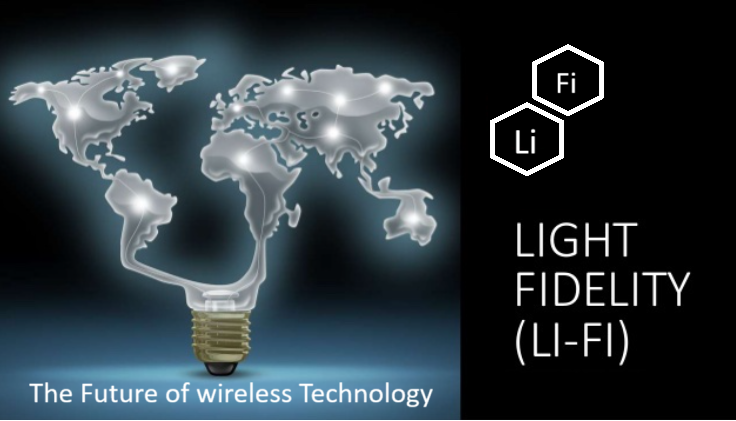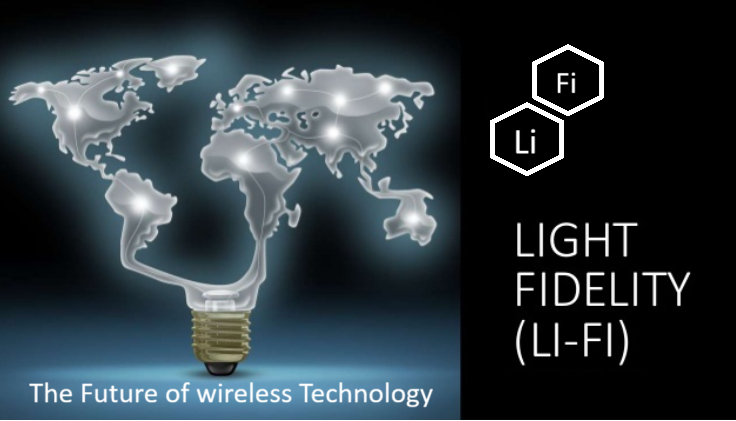Li-Fi Technology Introduction:
In an era where connectivity is paramount, traditional wireless communication technologies such as Wi-Fi face challenges related to bandwidth congestion, security vulnerabilities, and spectrum limitations. In this context, Li-Fi technology emerges as a promising alternative, harnessing the power of light to transmit data and revolutionize the way we connect.
Understanding Li-Fi: Li-Fi, short for Light Fidelity, is a wireless communication technology that utilizes light to transmit data. Unlike Wi-Fi, which relies on radio waves, Li-Fi leverages light waves from LED (Light Emitting Diode) bulbs to carry information. These LED bulbs are modulated at high speeds, imperceptible to the human eye, to encode data, turning them into data transmission sources.
Principles of Operation: The operation of Li-Fi technology revolves around the modulation of light intensity to encode data. This modulation can be achieved using various techniques, including on-off keying (OOK), which toggles the light source on and off rapidly to represent binary data, and dimming control, where the intensity of light is adjusted to convey information. The encoded data is then transmitted over the light waves and received by photodetectors or sensors on the receiving end.
Key Components:
- LED Bulbs: Serve as the primary light source for data transmission. These bulbs are equipped with semiconductor chips capable of rapid modulation.
- Photodetectors: Devices capable of detecting light and converting it into electrical signals. In Li-Fi systems, photodetectors capture the modulated light signals and decode them into usable data.
- Modulation Circuitry: Controls the modulation of light intensity to encode data. This circuitry synchronizes with the data source to ensure accurate transmission.
- Data Processing Unit: Responsible for encoding, decoding, and processing the data transmitted via Li-Fi. It manages tasks such as error correction and data compression to optimize transmission efficiency.
Advantages of Li-Fi:
- High Speeds: Li-Fi offers significantly faster data transfer rates compared to traditional Wi-Fi, owing to the inherent properties of light waves, enabling seamless streaming, downloads, and data-intensive applications.
- Enhanced Security: Since light cannot penetrate through walls, Li-Fi communication remains confined to the area illuminated by the light source, reducing the risk of unauthorized access or interception. This inherent physical layer security enhances privacy and data protection.
- Immunity to Electromagnetic Interference: Li-Fi operates in the visible light spectrum, which is free from electromagnetic interference, minimizing signal disruptions and ensuring reliable communication in environments where radio frequency interference is prevalent.
- Efficiency and Sustainability: LED bulbs used in Li-Fi systems are energy-efficient and eco-friendly, aligning with sustainability goals. Additionally, Li-Fi technology can be integrated with existing lighting infrastructure, offering dual functionality—illumination and data transmission—without additional energy consumption.
Applications of Li-Fi:
- Indoor Wireless Connectivity: Li-Fi technology is well-suited for indoor environments such as offices, homes, and commercial buildings, where LED lighting is prevalent. It provides high-speed internet access without the limitations of traditional Wi-Fi.
- Aviation and Aerospace: Li-Fi’s secure and interference-resistant nature makes it ideal for critical applications in aviation and aerospace, including in-flight entertainment, cockpit communication, and unmanned aerial vehicle (UAV) operations.
- Healthcare: Li-Fi can enhance connectivity in healthcare facilities while maintaining privacy and security standards. It facilitates real-time data transmission for medical devices, patient monitoring systems, and telemedicine applications.
- Smart Cities: Li-Fi technology can contribute to the development of smart cities by enabling high-speed communication in urban environments. It supports applications such as intelligent street lighting, traffic management systems, and public Wi-Fi hotspots.
Challenges and Future Directions: Despite its potential, Li-Fi technology faces challenges related to range limitations, line-of-sight requirements, and standardization efforts. Research is ongoing to address these challenges and enhance the scalability and reliability of Li-Fi systems. Future developments may focus on improving mobility, expanding coverage areas, and integrating Li-Fi with emerging technologies such as the Internet of Things (IoT) and 5G networks.
Conclusion: Li-Fi technology represents a paradigm shift in wireless communication, offering high-speed, secure, and efficient data transmission through light waves. With its unique advantages and diverse applications, Li-Fi has the potential to redefine connectivity in various sectors and pave the way for a brighter, more connected future. As research and development continue to progress, Li-Fi is poised to illuminate the path towards next-generation wireless communication systems.



Hi, this is a comment.
To get started with moderating, editing, and deleting comments, please visit the Comments screen in the dashboard.
Commenter avatars come from Gravatar.